Balkinization
an unanticipated consequence of
Jack M. Balkin
Balkinization Symposiums: A Continuing List
E-mail:
Jack Balkin:
jackbalkin at yahoo.com
Bruce Ackerman
bruce.ackerman at yale.edu
Ian Ayres
ian.ayres at yale.edu
Corey Brettschneider
corey_brettschneider at brown.edu
Mary Dudziak
mary.l.dudziak at emory.edu
Joey Fishkin
joey.fishkin at gmail.com
Heather Gerken heather.gerken at yale.edu
Abbe Gluck abbe.gluck at yale.edu
Mark Graber
mgraber at law.umaryland.edu
Stephen Griffin
sgriffin at tulane.edu
Jonathan Hafetz
jonathan.hafetz at shu.edu
Jeremy Kessler
jkessler at law.columbia.edu
Andrew Koppelman
akoppelman at law.northwestern.edu
Marty Lederman
msl46 at law.georgetown.edu
Sanford Levinson
slevinson at law.utexas.edu
David Luban
david.luban at gmail.com
Gerard Magliocca
gmaglioc at iupui.edu
Jason Mazzone
mazzonej at illinois.edu
Linda McClain
lmcclain at bu.edu
John Mikhail
mikhail at law.georgetown.edu
Frank Pasquale
pasquale.frank at gmail.com
Nate Persily
npersily at gmail.com
Michael Stokes Paulsen
michaelstokespaulsen at gmail.com
Deborah Pearlstein
dpearlst at yu.edu
Rick Pildes
rick.pildes at nyu.edu
David Pozen
dpozen at law.columbia.edu
Richard Primus
raprimus at umich.edu
K. Sabeel Rahmansabeel.rahman at brooklaw.edu
Alice Ristroph
alice.ristroph at shu.edu
Neil Siegel
siegel at law.duke.edu
David Super
david.super at law.georgetown.edu
Brian Tamanaha
btamanaha at wulaw.wustl.edu
Nelson Tebbe
nelson.tebbe at brooklaw.edu
Mark Tushnet
mtushnet at law.harvard.edu
Adam Winkler
winkler at ucla.edu
Compendium of posts on Hobby Lobby and related cases
The Anti-Torture Memos: Balkinization Posts on Torture, Interrogation, Detention, War Powers, and OLC
The Anti-Torture Memos (arranged by topic)
Recent Posts
Wherefore Art Thou Philanthropy
Just A Few Blogs
ACS Blog
Alas, a Blog
Althouse
Arts and Letters Daily
Atrios (Eschaton)
Bill of Health
Buzzflash.com
Buzz Machine
Cato at Liberty
Juan Cole (Informed Comment)
Concurring Opinions
The Constitution in 2020
Corrente
Crooked Timber
Daily Howler
Daily Kos
Dana Boyd
Brad DeLong
Digby (Hullabaloo)
Discriminations
Daniel Drezner
Kevin Drum (Mother Jones)
Electrolite
En Banc
Eunomia (Daniel Larison)
Fafblog
Michael Froomkin (Discourse.net)
GovLab (Beth Noveck)
Rick Hasen (Election Law)
History News Network
How Appealing
Ignatz (Sam Heldman)
The Importance of (Ernie Miller)
Infolaw
Instapundit
International Economic Law and Policy Blog
IntLawGrrls
Jacob Levy
Jesus' General
Jurisdynamics
The Kitchen Cabinet
Mark Kleiman
Law Blog Central
Larry Lessig
Lawyers, Guns and Money
Liberal Oasis
Brian Leiter's Law School Reports
The Leiter Reports
Marginal Revolution
Megan McArdle
Memeorandum
Metafilter
Mirror of Justice
The New Republic
Newseum
No More Mister Nice Blog
Brendan Nyhan
Opinio Juris
Orcinus
The Originalism Blog
Pandagon
Passport (Foreign Policy)
Overcoming Bias
Political Animal (Washington Monthly)
Political Theory Daily Review
Political Wire (Taegan Goddard)
The Poor Man
Virginia Postrel
Prawfsblawg
Public Reason
Jonathan Rauch
Raw Story
Redstate
ReligiousLeftLaw.com
Reporters Committee For Freedom of the Press
Reproductive Rights Blog
Rothman's Roadmap to the Right of Publicity
SCOTUS Blog
Seeing the Forest
Clay Shirky
The Shifted Librarian
The Situationist
Larry Solum (Legal Theory)
Andrew Sullivan
Talking Points Memo
Talk Left
Tapped
Tbogg
TechPresident
The Paper Chase (Jurist)
Tom Paine
Tom Tomorrow (This Modern World)
Eve Tushnet
Uggabugga
University of Chicago Law School Faculty Blog
Unqualified Offerings
The Volokh Conspiracy
War and Piece (Laura Rozen)
Wampum
Oliver Willis
Wonkette
Written Description
Matthew Yglesias
Yin
Your Choice of Feeds
1. XML
powered by
2. Atom Feed
3. RSS 2.0
Wherefore Art Thou Philanthropy
Guest Blogger
For the Balkinization symposium on John Witt, The Radical Fund: How a Band of Visionaries and a Million Dollars Upended America (Simon and Schuster, 2025). Larry Kramer Let me start by saying that I
absolutely loved reading this book. It’s a beautifully written, deeply
engrossing account of a marvellous range of events across the first third of
the twentieth century, though telling these stories often requires John to
reach back to the last third of the nineteenth century and, in a few instances,
takes him forward into later decades of the twentieth. This is historical
research at its very best, displaying an encyclopaedic grasp of details, without
ever losing either the narrative thread or the larger picture. I found it
entirely captivating. Along the way, readers are treated to
oodles of fascinating details and novel insights about well-known
incidents—from the Scopes Monkey Trial and the trials of Sacco and Vanzetti to
the Scottsboro case—while also being introduced to less familiar episodes, some
totally new to me, like April Farm, the Brookwood Labor College, and many more.
In like fashion, we gain new perspectives and insights about well-known personalities
like Roger Baldwin, Clarence Darrow, and W.E.B. Dubois; as well as familiar but
not quite as well-known people like Elizabeth Gurley Flynn, James Weldon
Johnson, and Walter Lippman; and more than a few completely new characters (again,
to me at least) like Charles Garland himself, A.J. Muste, and Clinton Golden. John manages, in just a few pages for each,
to paint detailed pictures of events and the people who made them, bringing the
period to life and giving the reader a feeling of familiarity and authenticity.
The cumulative effect is a narrative tour de force that should become a must-read
for anyone looking to understand this turbulent period of American political history.
It also serves as a timely reminder today—when even the most modest efforts to
provide a social safety net are with a straight face condemned by folks on the
right as “Marxist” and “socialistic”—that there was a time in the not so
distant past when American politics really did have a far left. But here is the thing: the book isn’t
really about the Garland Fund, which serves in John’s account more like a
narrative hook on which to hang the many stories that comprise the book’s substance.
The Fund runs through the text as a kind of Zelig-like figure (the eponymous
lead character in Woody Allen’s 1983 film). Like the character in the movie, the
Fund is there, in the background, of nearly every important development on the
political left in the 1920s and 30s. But we learn relatively little about it:
about the role it played and how it played that role. It’s obviously important, in thinking
about philanthropy, to look at the people and organizations that receive
funding. But grants come at the end of a process, and we can’t understand how
to think about the grants without knowing a great deal more about the process
than John gives us in The Radical Fund. We do learn about many of the
Fund’s board members, but they appear chiefly as characters in the individual
stories to which they relate. Moreover, to appreciate how a funder works, we need
to know much more than who is on the board and their personal motivations. How
are the board members chosen, for example? Who was not chosen, and why? And,
more broadly, what are the funder’s governance structures? Nor is it enough to know only about
the board. How is the funder staffed? How is the staff organized? How are staff
members chosen? What is the relationship between board and staff? What is the
funder’s philosophy of and approach to philanthropy generally? Is it a
strategic funder? If so, how are strategies devised, executed, and assessed? If
not, how does it organize the use of its assets? How are particular grant
recipients selected and evaluated? What kind of relationship does the funder
maintain after the grant is made? Having read The Radical Fund, I
can’t confidently tell you the answer to any of these questions. We never learn
how (or in many cases, why) individual board members were chosen, and with few
exceptions, we are given little sense of how the board’s operations evolved
over time, much less what its decision-making process looked like. Indeed, we
learn virtually nothing about the Garland Fund’s internal structure,
operations, or processes for making choices. There are discussions of the
Fund’s broad thinking around its major initiatives—whether to support labor or focus
on race, for example, or whether to support arts and culture—but (again with
few exceptions) we get little information or insight into how the Fund went
about translating these broad goals into decisions about the specific grants it
made and the particular grantees it supported. This is unfortunate, because rigorous
histories of philanthropy are scarce, despite its undeniable importance and
influence. To have a historian of John Witt’s talent and skill look as closely
and deeply at the Fund as he did at its grantees would have been an invaluable
contribution to a woefully understudied field. This is particularly true inasmuch as the
Garland Fund’s creation in 1924 occurred smack in the middle of the formative
period of modern philanthropy—following on the heels of the Russell Sage Foundation(1907),
the Carnegie Corporation (1911), the Rockefeller Foundation (created in 1913
but expanded into its modern form in 1929), the Cleveland Foundation (created
as the first community foundation in 1914), the Rosenwald Fund (1917), the
Commonwealth Fund (1918), the Twentieth Century Fund (1919), the Duke Endowment
(1924), and the Kresge Foundation (1924), and ahead of the Sloan Foundation
(1934), the Ford Foundation (1936), and the Guggenheim Foundation (1937). The creation of these newfangled private
grant-making entities—built on a novel legal and institutional architecture to foster
a modern bureaucratic form of philanthropy—introduced something unprecedented and
radically different into civil society, and the new foundations were all breaking
fresh ground in these years: developing the first idea of professional
philanthropy, while experimenting with unconventional approaches to giving away
money. The whole idea that there can be a “science of philanthropy” emerged in
this period. Which begs the question: what did the folks
at the Garland Fund make of it all? What were their ideas and theories about
the role of philanthropy and the best ways to practice it? People who have
never done serious philanthropy invariably roll their eyes when told that
giving away money at scale is difficult—difficult, at least, to do well. But
anyone who has had responsibility for doing so knows this is true. How, then,
did the directors and staff of the Garland Fund approach the contemporary issues
and controversies about professional philanthropy? Apart from the short Chapter
11—which describes their strenuous (somewhat deceptive and disingenuous) efforts
to get the full tax benefits offered for philanthropic activities—we are not
told much. Of equal importance to understanding
the Garland Fund are questions about how its directors and staff saw themselves
operating within the larger funder community? A brief discussion of their initial
decision not to fund Black education (pp. 174-77) makes clear they were aware
of the newly emerging big funders. Did they communicate with them? Try to learn
from them? What did they think about how these funders operated? Did they ever
collaborate or seek to collaborate? Did anything that was happening in
the larger philanthropic community influence their behavior or decisions? If
so, how? If not, why not? As a reader, I came away with very
little sense of either how the Garland Fund operated internally or how
it operated within the still emergent philanthropic community. Of course, none
of this takes away from what the book does accomplish, which is to take
readers on an exhilarating journey through the radical politics of the 1920s
and 30s, but I was sorry (and a bit disappointed) to see how little attention
John gave to the practice of philanthropy itself. It is a missed opportunity—one
worthy, perhaps, of a follow up article. As an aside, given what we do learn
about how the Fund operated, I was struck by how many of its activities would
be considered unethical, and possibly even unlawful, today. Time and time
again, for instance, we read about board members ignoring flagrant conflicts of
interest to shamelessly fund their own organizations or those of their friends.
I’m not entirely sure what the law was at the time; perhaps it was different.
In any event, it would have been interesting to get some insight into how (or
if) the Fund’s directors thought about the ethics of philanthropy and its
bearing on their own practices. Be all this as it may, the critical
question in philanthropy is always and ultimately about impact, about making a
difference in the world. So, what can we say about the Garland Fund’s actual
impact? John’s view is clear from the book’s subtitle: “How a Band of
Visionaries and a Million Dollars Upended America.” I’m not sure the book succeeds
in substantiating this claim, though I’m also not sure the Fund needs to have
had this extravagant effect for its story to be worth telling. Clearly, many of the organizations the
Fund supported or helped launch turned out later to be very impactful. These
include organizations that remain influential today, like the ACLU and the
NAACP, as well as prominent journals like The Nation and The New
Republic. At the same time, as Roger Baldwin himself conceded (p. 531), most
of the Fund’s grantees did not have any lasting impact, making it difficult to
know whether the successes reflect strategic shrewdness or simply the luck that
comes from spreading one’s bets widely enough. Here is a good example of a
question that would have been helped by knowing more about the internal
approach and processes used by the board and staff. Further complicating the task of
assessing impact—even when it comes to Fund grantees that unquestionably made a
difference—it is hard to know the extent to which the Fund’s contributions were
pivotal or even meaningfully additive. I can think of efforts we supported while
I was at Hewlett in which our funding was unquestionably decisive, whether by
virtue of timing, scale, or both. In other instances, we contributed to efforts
that I was proud and happy to join, but other funders developed the strategy, spearheaded
the idea, or put in more capital, and I cannot honestly say that our funding or
participation was the critical difference between success and failure. Which
efforts of the Garland Fund fall into the former category and which the latter?
It’s hard to know without more information about what other funders were doing
or contributing. The amount of money put into most
ventures by the Garland Fund seems small, which isn’t surprising since it was a
small fund. But, then, philanthropy itself was still quite small compared to
today. So, was the Garland Fund just a minor participant in many organizations,
some of which turned out later to be very impactful? Or was its participation
in some way pivotal to success? What can we say, in other words, about
attribution, especially when it comes to organizations that the Garland Fund
supported early but that didn’t achieve impact and success until many years later,
based on strategies and work quite different from what the Fund had supported
at the start? As anyone involved in philanthropic
evaluation will attest, questions like these are incredibly difficult to answer,
particularly as grantee organizations that achieve major impact tend also to
have multiple funders. In some ways, the most reliable evidence we may have is
what other funders and other actors think. And here, as John displays in the
book’s final pages, the record is unclear. Perhaps the fairest statement comes
from the Fund’s most important actor, Roger Baldwin. As John describes Baldwin’s
late-life views, “The Fund’s modest endowment had allowed its directors to put
issues on the political agenda that elected officials had skirted time and
again, and which unions and membership organizations alone could not sustain.”
(p. 531) Looking back on the entire experience, even with the mistakes, false
starts, and wrong turns, Baldwin concluded, “’I suppose we did quite a lot of
good.’” (p. 532) Speaking from the perspective of 12
years in philanthropy, I think that’s saying quite a lot. * * *
Today’s new ultra-high net worth funders
often act as if they have nothing to learn from the philanthropy of the past
and seem to believe they are inventing ways of doing philanthropy that are
wholly new and uncommonly bold. In fact, little of what today’s funders are
doing was not tried in some form by funders in the early and middle years of
the 20th century. As The Radical Fund makes abundantly clear,
earlier generations of funders were every bit as ambitious, creative,
risk-taking, and courageous as anyone working in the field today—more, perhaps,
if we compare the work of funders during the first Red Scare to the timid,
fearful response of today’s foundations to the lethal threat posed by the Trump
Administration. For these funders, The Radical Fund should be a
must-read. Larry Kramer is President and Vice Chancellor, The London School of Economics and Political Science. You can reach him by e-mail at larry.kramer@lse.ac.uk.
Posted
9:30 AM
by Guest Blogger [link]
Books by Balkinization Bloggers

Linda C. McClain and Aziza Ahmed, The Routledge Companion to Gender and COVID-19 (Routledge, 2024)

David Pozen, The Constitution of the War on Drugs (Oxford University Press, 2024)

Jack M. Balkin, Memory and Authority: The Uses of History in Constitutional Interpretation (Yale University Press, 2024)
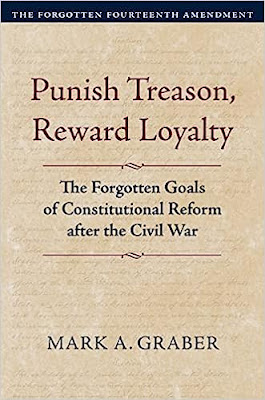
Mark A. Graber, Punish Treason, Reward Loyalty: The Forgotten Goals of Constitutional Reform after the Civil War (University of Kansas Press, 2023)
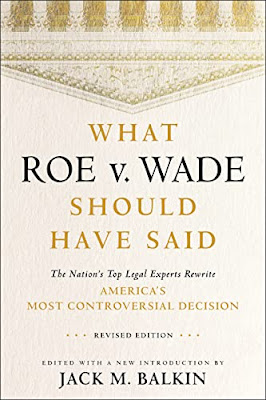
Jack M. Balkin, What Roe v. Wade Should Have Said: The Nation's Top Legal Experts Rewrite America's Most Controversial Decision - Revised Edition (NYU Press, 2023)

Andrew Koppelman, Burning Down the House: How Libertarian Philosophy Was Corrupted by Delusion and Greed (St. Martin’s Press, 2022)

Gerard N. Magliocca, Washington's Heir: The Life of Justice Bushrod Washington (Oxford University Press, 2022)
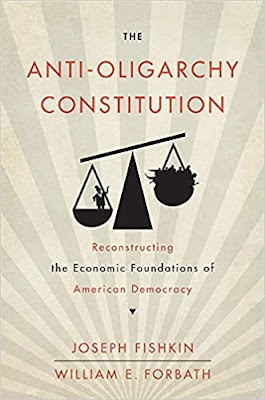
Joseph Fishkin and William E. Forbath, The Anti-Oligarchy Constitution: Reconstructing the Economic Foundations of American Democracy (Harvard University Press, 2022)
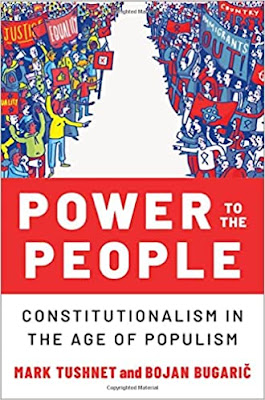
Mark Tushnet and Bojan Bugaric, Power to the People: Constitutionalism in the Age of Populism (Oxford University Press 2021).

Mark Philip Bradley and Mary L. Dudziak, eds., Making the Forever War: Marilyn B. Young on the Culture and Politics of American Militarism Culture and Politics in the Cold War and Beyond (University of Massachusetts Press, 2021).

Jack M. Balkin, What Obergefell v. Hodges Should Have Said: The Nation's Top Legal Experts Rewrite America's Same-Sex Marriage Decision (Yale University Press, 2020)

Frank Pasquale, New Laws of Robotics: Defending Human Expertise in the Age of AI (Belknap Press, 2020)

Jack M. Balkin, The Cycles of Constitutional Time (Oxford University Press, 2020)

Mark Tushnet, Taking Back the Constitution: Activist Judges and the Next Age of American Law (Yale University Press 2020).

Andrew Koppelman, Gay Rights vs. Religious Liberty?: The Unnecessary Conflict (Oxford University Press, 2020)

Ezekiel J Emanuel and Abbe R. Gluck, The Trillion Dollar Revolution: How the Affordable Care Act Transformed Politics, Law, and Health Care in America (PublicAffairs, 2020)

Linda C. McClain, Who's the Bigot?: Learning from Conflicts over Marriage and Civil Rights Law (Oxford University Press, 2020)
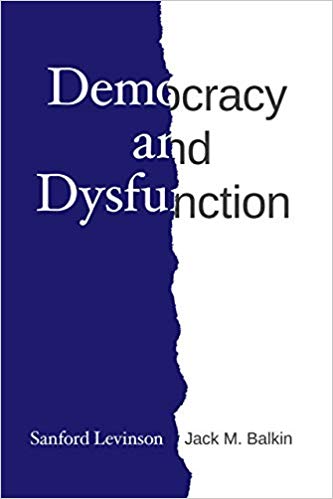
Sanford Levinson and Jack M. Balkin, Democracy and Dysfunction (University of Chicago Press, 2019)

Sanford Levinson, Written in Stone: Public Monuments in Changing Societies (Duke University Press 2018)

Mark A. Graber, Sanford Levinson, and Mark Tushnet, eds., Constitutional Democracy in Crisis? (Oxford University Press 2018)

Gerard Magliocca, The Heart of the Constitution: How the Bill of Rights became the Bill of Rights (Oxford University Press, 2018)

Cynthia Levinson and Sanford Levinson, Fault Lines in the Constitution: The Framers, Their Fights, and the Flaws that Affect Us Today (Peachtree Publishers, 2017)

Brian Z. Tamanaha, A Realistic Theory of Law (Cambridge University Press 2017)

Sanford Levinson, Nullification and Secession in Modern Constitutional Thought (University Press of Kansas 2016)

Sanford Levinson, An Argument Open to All: Reading The Federalist in the 21st Century (Yale University Press 2015)

Stephen M. Griffin, Broken Trust: Dysfunctional Government and Constitutional Reform (University Press of Kansas, 2015)

Frank Pasquale, The Black Box Society: The Secret Algorithms That Control Money and Information (Harvard University Press, 2015)

Bruce Ackerman, We the People, Volume 3: The Civil Rights Revolution (Harvard University Press, 2014)
Balkinization Symposium on We the People, Volume 3: The Civil Rights Revolution

Joseph Fishkin, Bottlenecks: A New Theory of Equal Opportunity (Oxford University Press, 2014)

Mark A. Graber, A New Introduction to American Constitutionalism (Oxford University Press, 2013)

John Mikhail, Elements of Moral Cognition: Rawls' Linguistic Analogy and the Cognitive Science of Moral and Legal Judgment (Cambridge University Press, 2013)

Gerard N. Magliocca, American Founding Son: John Bingham and the Invention of the Fourteenth Amendment (New York University Press, 2013)

Stephen M. Griffin, Long Wars and the Constitution (Harvard University Press, 2013)

Andrew Koppelman, The Tough Luck Constitution and the Assault on Health Care Reform (Oxford University Press, 2013)

James E. Fleming and Linda C. McClain, Ordered Liberty: Rights, Responsibilities, and Virtues (Harvard University Press, 2013)
Balkinization Symposium on Ordered Liberty: Rights, Responsibilities, and Virtues

Andrew Koppelman, Defending American Religious Neutrality (Harvard University Press, 2013)

Brian Z. Tamanaha, Failing Law Schools (University of Chicago Press, 2012)

Sanford Levinson, Framed: America's 51 Constitutions and the Crisis of Governance (Oxford University Press, 2012)

Linda C. McClain and Joanna L. Grossman, Gender Equality: Dimensions of Women's Equal Citizenship (Cambridge University Press, 2012)

Mary Dudziak, War Time: An Idea, Its History, Its Consequences (Oxford University Press, 2012)

Jack M. Balkin, Living Originalism (Harvard University Press, 2011)

Jason Mazzone, Copyfraud and Other Abuses of Intellectual Property Law (Stanford University Press, 2011)

Richard W. Garnett and Andrew Koppelman, First Amendment Stories, (Foundation Press 2011)

Jack M. Balkin, Constitutional Redemption: Political Faith in an Unjust World (Harvard University Press, 2011)

Gerard Magliocca, The Tragedy of William Jennings Bryan: Constitutional Law and the Politics of Backlash (Yale University Press, 2011)

Bernard Harcourt, The Illusion of Free Markets: Punishment and the Myth of Natural Order (Harvard University Press, 2010)

Bruce Ackerman, The Decline and Fall of the American Republic (Harvard University Press, 2010)
Balkinization Symposium on The Decline and Fall of the American Republic

Ian Ayres. Carrots and Sticks: Unlock the Power of Incentives to Get Things Done (Bantam Books, 2010)

Mark Tushnet, Why the Constitution Matters (Yale University Press 2010)
Ian Ayres and Barry Nalebuff: Lifecycle Investing: A New, Safe, and Audacious Way to Improve the Performance of Your Retirement Portfolio (Basic Books, 2010)
.jpg)
Jack M. Balkin, The Laws of Change: I Ching and the Philosophy of Life (2d Edition, Sybil Creek Press 2009)

Brian Z. Tamanaha, Beyond the Formalist-Realist Divide: The Role of Politics in Judging (Princeton University Press 2009)
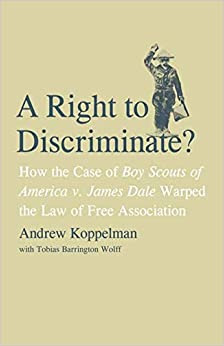
Andrew Koppelman and Tobias Barrington Wolff, A Right to Discriminate?: How the Case of Boy Scouts of America v. James Dale Warped the Law of Free Association (Yale University Press 2009)

Jack M. Balkin and Reva B. Siegel, The Constitution in 2020 (Oxford University Press 2009)
Heather K. Gerken, The Democracy Index: Why Our Election System Is Failing and How to Fix It (Princeton University Press 2009)

Mary Dudziak, Exporting American Dreams: Thurgood Marshall's African Journey (Oxford University Press 2008)

David Luban, Legal Ethics and Human Dignity (Cambridge Univ. Press 2007)

Ian Ayres, Super Crunchers: Why Thinking-By-Numbers is the New Way to be Smart (Bantam 2007)

Jack M. Balkin, James Grimmelmann, Eddan Katz, Nimrod Kozlovski, Shlomit Wagman and Tal Zarsky, eds., Cybercrime: Digital Cops in a Networked Environment (N.Y.U. Press 2007)
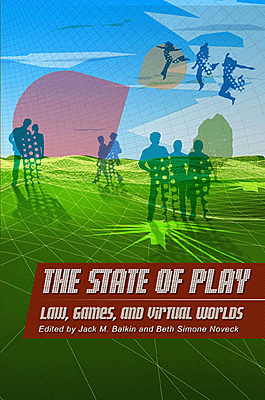
Jack M. Balkin and Beth Simone Noveck, The State of Play: Law, Games, and Virtual Worlds (N.Y.U. Press 2006)

Andrew Koppelman, Same Sex, Different States: When Same-Sex Marriages Cross State Lines (Yale University Press 2006)
Brian Tamanaha, Law as a Means to an End (Cambridge University Press 2006)
Sanford Levinson, Our Undemocratic Constitution (Oxford University Press 2006)
Mark Graber, Dred Scott and the Problem of Constitutional Evil (Cambridge University Press 2006)
Jack M. Balkin, ed., What Roe v. Wade Should Have Said (N.Y.U. Press 2005)
Sanford Levinson, ed., Torture: A Collection (Oxford University Press 2004)
Balkin.com homepage
Bibliography
Conlaw.net
Cultural Software
Writings
Opeds
The Information Society Project
BrownvBoard.com
Useful Links
Syllabi and Exams